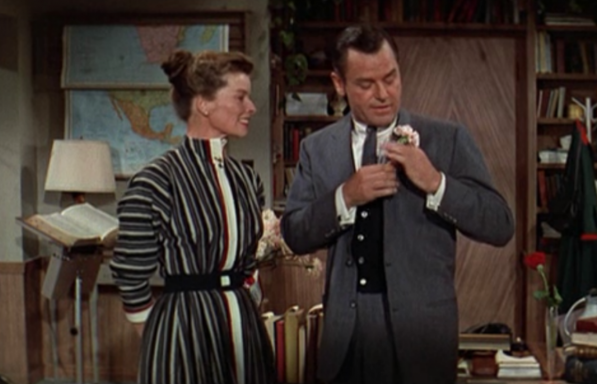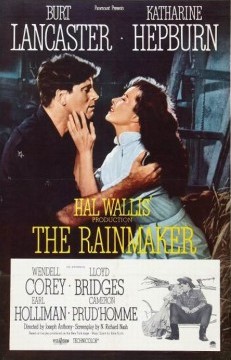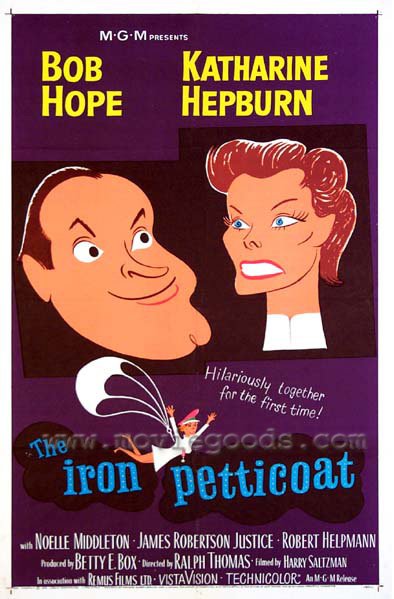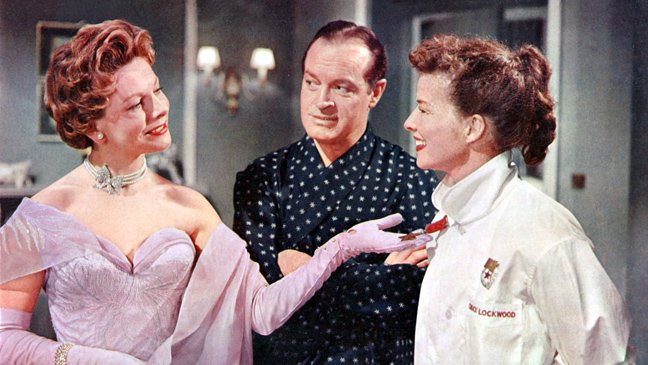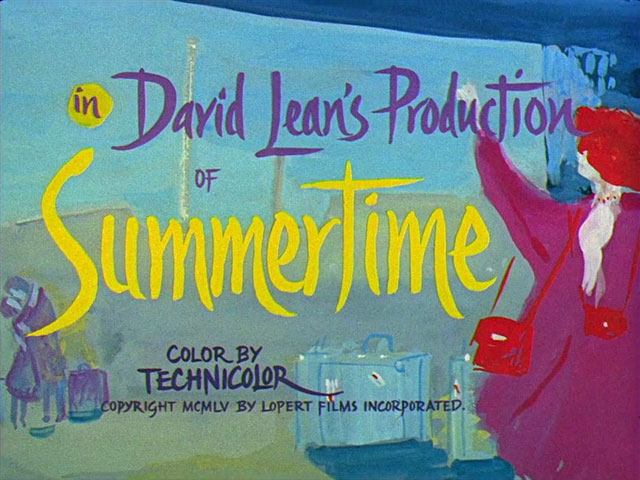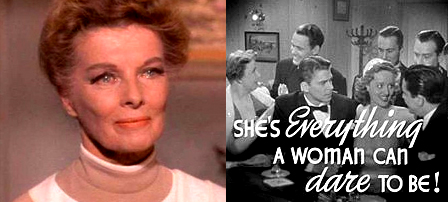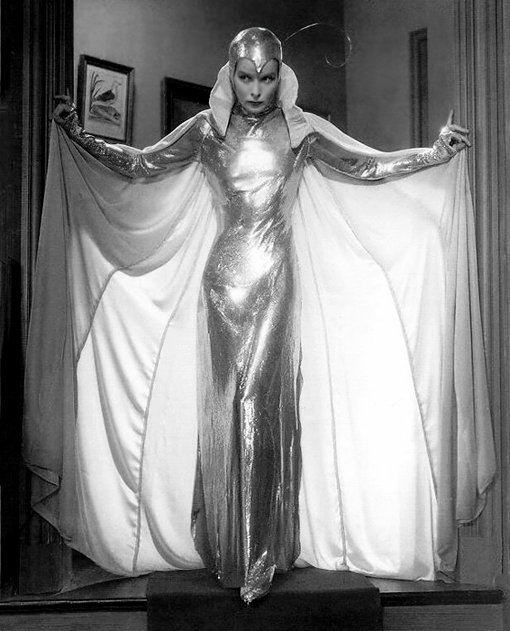A Year with Kate: Desk Set (1957)
 Wednesday, August 6, 2014 at 1:56PM
Wednesday, August 6, 2014 at 1:56PM Episode 32 of 52: In which Katharine Hepburn plays a woman named Bunny who starts a battle of wits with Spencer Tracy's computer. That's actually the plot.
 Desk Set is a strange movie that feels both dated and ahead of its time. Its office setting, midcentury style, and technophobic slant are all signs of 1950s comedy. But in tone it stands apart. The 1930s screwball comedies and the 1940s battles of the sexes had given way to two subgenres in the 1950s: sex comedies (typically starring Marilyn Monroe), or romantic comedies (typically starring Doris Day or alternately Audrey Hepburn, depending on the ratio of laughs to romance).However, Desk Set fits into neither category comfortably. Nor is this second-to-last Tracy/Hepburn collaboration a throwback to their 40s battles.
Desk Set is a strange movie that feels both dated and ahead of its time. Its office setting, midcentury style, and technophobic slant are all signs of 1950s comedy. But in tone it stands apart. The 1930s screwball comedies and the 1940s battles of the sexes had given way to two subgenres in the 1950s: sex comedies (typically starring Marilyn Monroe), or romantic comedies (typically starring Doris Day or alternately Audrey Hepburn, depending on the ratio of laughs to romance).However, Desk Set fits into neither category comfortably. Nor is this second-to-last Tracy/Hepburn collaboration a throwback to their 40s battles.
So, where does Desk Set fit? Considering the flirty bickering over lunch, the playful bantering over dinner, the details about food, the major character revelations during holidays, and the amicable way the leads transition from friendship to romance, Desk Set resembles nothing so much as an Ephron romcom.
And that’s exactly what Desk Set is.
